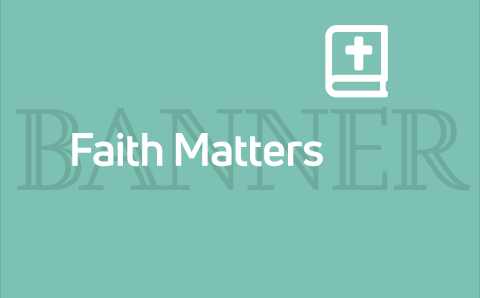When it comes to racial and ethnic diversity in the Christian Reformed Church, these are the best of times—and the worst of times. Churches either succeed at becoming multiethnic or they fail miserably. Granted, it’s not an easy task, but in many senses, it’s not an option. As urban missiologist Ray Bakke says, “The world has come to our doorstep”—it’s up to us to welcome it or to turn it away.
Although we can learn from churches who fail in their efforts to become multiethnic, I’d like to highlight three congregations who are succeeding in this endeavor: Cornerstone CRC of Ann Arbor, Mich.; The River in Raleigh/Durham, N.C.; and Oasis Community CRC in Orlando, Fla.
Each church represents a different method of becoming multiethnic: by merger (Cornerstone), by intentionality (The River), and naturally (Oasis). It’s a tale of three churches, and one worth telling.
Cornerstone CRC: Merging toward Multiethnicity
Early this year, Cornerstone CRC was born from the merger of Lighthouse CRC, an emerging second-generation Korean congregation, and Covenant Community Church, an independent non-denominational church with ties to the Reformed tradition through its pastors—all of whom were Calvin Seminary graduates.
Most of the 140 members of the new Cornerstone CRC are second-generation Korean, but they see themselves evolving into a multiethnic and multinational congregation. The church’s pastor, Rev. Peter Choi, said “Our vision is ‘Loving God and loving people, beginning in the Ann Arbor community.’ In order to build a missional church where our members can be emboldened to bring [non-Asian] friends, we felt a need to become more multiethnic.”
Cornerstone’s congregation consists mostly of young professionals who have more in common with their coworkers than they have with their first-generation immigrant parents. Like many second-generation Christians, they are marrying outside of their own racial/ethnic group. Because their first language is usually English, it’s easier for them to minister to non-Korean people than it was for their parents, many of whom spoke little English.
“We’re an English-only congregation,” says Pastor Choi, “but even so, we don’t ignore our Korean heritage. We’re trying to understand how we’ve been shaped by our cultural background so we can better understand how it is God wants to reshape and renew us.”
When asked what advice he would give to other churches, Pastor Choi said, “Becoming multiethnic is something we’re still striving toward. One struggle we have is both recognizing where we come from and understanding the gospel’s unique call to racial reconciliation and Christian unity. It means we seek friendship with people different from us not because it’s the cool or polite thing to do, but because we see God’s image in them.”
The River: Starting with the End in Mind
In 1997, Tennessee native Coleman Moore planted a church called The River in Raleigh/Durham, N.C. From the very beginning, the church’s intent was to be multiethnic. At times people of color made up 50 percent of the congregation; today the average is around 35 percent.
Because of his Southern roots, Moore holds the conviction that the Church must be a reconciling body, bringing together people who wouldn’t usually worship with each other. For him, to become multiethnic means intentionally developing leadership across racial and ethnic lines and honoring the worship needs of different groups.
“I made many mistakes in the beginning—in fact, some lessons took me almost six years to learn,” said Moore. For example, the laid-back preacher tended to “dress down” on Sunday mornings. But when African American members began to feel comfortable with Moore, they told him they longed for a church that was more formal in worship and in dress. The building needed more of a “churchy” look to it. And Moore learned that all-white worship teams don’t cut it.
Moore also learned that people of color who visited the church for the first time were suspicious of this white preacher in an intentionally multiethnic church and expected not to be welcomed. White members needed to be careful not to give off negative vibes. Says Moore, “People of color learn to read those signals very early; whites don’t understand that nor know when they themselves are giving off those signals. We needed to learn how to greet visitors as people Jesus sent our way.”
Moore also reflected on the need for people to hear many voices from the pulpit. “It’s not healthy to hear only one voice Sunday after Sunday. People need to hear from different walks of life, different perspectives, different vocabulary, different stories.”
Oasis Community Church: Letting it Happen
Orlando, Fla., is one of the fastest-growing cities in the U.S. It’s home to Disney World, Sea World, and many other vacation destinations. People of all ethnicities flock to Orlando for jobs at Disney World, Sea World, and other outlets of the tourist industry.
For Oasis Community Church, being located in Orlando meant that the ethnic makeup of its congregation began to change over time. Today the congregation is about 50 percent Anglo, 40 percent Hispanic and black, and 10 percent Korean. Rev. Stan Workman says, “It just naturally happened. It wasn’t something we planned.”
But many factors contributed to the congregation’s multiethnic flavor. Ten years ago, Oasis was the parent to a Hispanic congregation. Programs for adults and youth often overlapped. When the Hispanic pastor left, the Hispanic families who remained became part of Oasis Community. Also, the congregation’s former location was in a predominantly African American neighborhood. Several families started coming and have stayed.
Just like at The River, the staff, worship team, and council of Oasis are multiethnic. Worship reflects different styles and languages. Potlucks are international feasts. Evesdropping on phone conversations, you can hear both English and Spanish conversations. Even Pastor Workman is attempting to learn Spanish. Workman has also been instrumental in getting classis meetings to become more bilingual in their worship. “We live in an ethnically diverse community,” he says. “If we are to reflect the community, then our doors need to be open to all.”
Each of these three ministries finds itself in a racially or ethnically diverse community. Each church reaches out to its neighbors in its own way. Whether intentionally or naturally, each reflects the universal body of Christ in which people of every nation and tongue and tribe find a place at the Lord’s table.
The traits all three congregations share is a genuine attempt to establish meaningful relationships with persons different from themselves and a commitment to reflecting the diversity of the congregation in their worship and leadership. With that kind of attitude, the best of times is sure to come.
Read More About it
One New People: Models for Developing a Multiethnic Church, by Manuel Ortiz (InterVarsity Press, 1996).
One Body, One Spirit: Principles of Successful Multiracial Churches, by George Yancey (InterVarsity Press, 2003).
The Church Is in a Stew: Developing Multicongregational Churches, by Jerry Appleby (Beacon Hill Press, 1990).
A Beginner’s Guide to Crossing Cultures: Making Friends in a Multicultural World, by Patty Lane (InterVarsity
About the Author
Gary Teja is Hispanic Ministry and Southeast U. S. Team Leader for Christian Reformed Home Missions.






